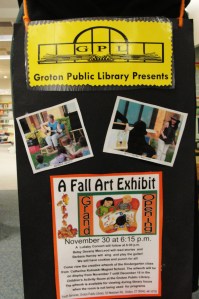
 Thank you to all the children and adults who braved the rain last night to attend the Groton Public Library Lullaby Concert; to Judith and Miss Vicky for arranging these events, and supplying the holiday treats; and a special thanks to the little ones for becoming such great “wild things” during my reading of Where The Wild Things Are.
Thank you to all the children and adults who braved the rain last night to attend the Groton Public Library Lullaby Concert; to Judith and Miss Vicky for arranging these events, and supplying the holiday treats; and a special thanks to the little ones for becoming such great “wild things” during my reading of Where The Wild Things Are.
Reading to kids is a wonderful experience, and never knowing what the overall age of my audience will be keeps me on my toes. In writing for children, you must always keep the child reader or listener in mind, and this applies to reading to large groups of children as well.
What I’ve learned through my own experiences from being a volunteer reader:
1. Come prepared with books for a variety of ages. If the overall group consists of more toddlers, read the shorter books with less text.
2. Make sure to include books which allow the kids to be involved, either through making sounds or answering questions. Kids want to be a part of the reading and should not be expected to passively sit for forty-five minutes. Respect their needs.
3. Pay close attention to the energy level of the group. If the kids seem restless, encourage a stretching break. Get them to stamp their feet, stretch their arms, and to get their wiggles out.
4. Appreciate your audience.
5. Bring stickers to give the kids at the end of the concert. This way you can greet them personally and thank them for coming.
I look forward to my next appearance with the lovely Barbara Harvey on guitar.















